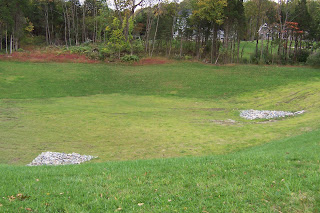The Turkey’s Tale

As we continue to eat Thanksgiving leftovers of every imaginable description, let us also give thanks that the wild turkey has been brought back from the brink of extinction. Abundant when the first settlers arrived on the East Coast of America, the native turkey was hunted for both its meat and feathers. As more and more of its woodland habitat was converted to urban areas, the combined effect of loss of habitat and uncontrolled hunting took its toll. In the early 1900s, the number of turkeys nationwide is believed to have dropped to 30,000 birds. Today, thanks to preservation efforts, there are nearly 7 million.
In our neck of the woods, we still see turkeys running wild through the forest, nesting, and roosting in trees at night. In years past, we’ve been visited by as many as 32 birds at once (five hens and their broods). The guard hen gave a soft cluck when she felt it was safe for each bird to climb up into the yard from a lower plateau. With military precision, they fanned out across the lawn in a straight line formation, eating every bug in sight; then marched off into the woods.
Last winter we had the “driveway turkeys,” a pair of males who walked up and down our driveway each morning to peck at the grit and mast.
Turkeys require mast --- acorns, nuts, seeds, and other edible material that falls from forest trees --- and wild grasses in their diet. The forest also provides shelter, nesting, and roosting areas. No forest, no mast, no turkeys. The web of interdependence is clear.
You would think we might have learned something from our previous near-miss in losing the wild turkey, but the devastation of our forests continues today unabated.
So next year, when you are paying your annual homage to the Pilgrims and Native Americans, please also remember the Turkey’s Tale, and make a contribution to a land conservancy that will help us preserve our forests.

